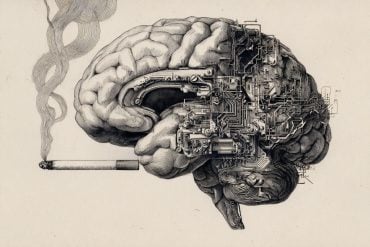Summary: Researchers identified a new role for the PIEZO2 protein in mediating chronic pain hypersensitivity, suggesting a new target for pain relief. The study showed that mutations in PIEZO2 make pain receptors, or nociceptors, highly sensitive to mechanical stimuli, explaining persistent pain. This finding could lead to new analgesics that better address chronic pain by targeting PIEZO2 channels.
Key Facts:
- Chronic Pain Link: PIEZO2 protein mutations cause hypersensitivity in pain receptors.
- Nociceptor Sensitivity: Mutations make nociceptors react to light touch as pain.
- New Drug Target: Targeting PIEZO2 channels could improve chronic pain treatments.
Source: Helmholtz
A team of researchers led by Oscar Sánchez-Carranza in Professor Gary Lewin’s lab at the Max Delbrück Center have identified a new function for the PIEZO2 protein – in mediating chronic pain hypersensitivity.
The research suggests a new target for analgesics and potentially explains why pain medications that target voltage gated sodium channels have been disappointing as clinical targets.
The study was published in the journal Brain, a leading neurology journal.
“There’s a good correlation between chronic pain and the sensitization of pain receptors, called nociceptors, in humans,” says Lewin. “This study implicates the PIEZO2 channel as a critical mediator of sensory signals that maintain chronic pain.”
PIEZO2 protein forms an ion channel in human sensory receptors. Previous studies have shown that the ion channel is involved in communicating the sense of touch to the brain. People with “loss-of-function” mutations in the PIEZO2 gene are hypo-sensitive to gentle touch or vibration.
By contrast, patients with “gain-of-function mutations” in PIEZO are often diagnosed with complex developmental disorders. But whether gain-of-function mutations are responsible for mechanical hypersensitivity had never been proven.
Mutation sensitizes nociceptors dramatically
To study the connection, Sánchez-Carranza created two strains of so called “gain-of-function” mice, each carrying a different version of a mutated PIEZO2 gene.
He expected to find the touch receptors of these mice to be highly sensitive. In cell biology experiments his team has found that PIEZO2 mutations have a powerful effect on the activity of the ion channel.
One mutation, for example, causes the channel to open with 10 times less force compared to normal non-mutated channels.
Using electrophysiological methods developed in the Lewin lab, Sánchez-Carranza and his colleagues measured electrical activity in sensory neurons isolated from the transgenic mice.
They found that in addition to sensitizing touch receptors as expected, the mutations made nociceptive receptors – neurons that detect painful mechanical stimuli – dramatically more sensitive to mechanical stimuli.
Moreover, the researchers found that the nociceptors were activated by mechanical stimuli that would normally be experienced as light touch.
“You pretty much need to crush the skin to activate nociceptors,” Sánchez-Carranza explains.
But the nociceptors from the transgenic mice were triggered by levels of mechanical force that would normally be perceived as a touch. They were incredibly sensitive.”
That a single mutation in PIEZO2 was enough to change the physiology of the nociceptors from one type of neuron to another, was especially surprising, says Lewin. More significantly, when the stimulus was removed, the neurons kept firing.
The study is the first time that anyone has linked gain-of-function mutations in the PIEZO2 gene to pain receptors.
PIEZO2 might be involved in pain syndromes like fibromyalgia
Clinical studies have shown that in patients with chronic pain syndromes such as fibromyalgia and small fiber neuropathies, C-fiber nociceptors, which are the sensory receptors that initiate pain, are hyperactive.
When researchers have recorded the activity of nociceptors in such people, they found that the they were active in the absence of any mechanical stimulus. But the mechanism was not clear.
“We show that just by changing one amino acid in PIEZO2, we can actually mimic a lot of what happens in chronic pain in the C-fibers,” says Lewin.
In humans, “PIEZO2 might be involved in many of these pathologies.” Nociceptive neurons are the largest population of sensory neurons that innervate the skin – humans have four times more pain receptors in the skin than touch receptors.
Up to 20% of the adult population suffers from chronic pain, according to a 2023 study by the U.S. National Institutes of Health, which is poorly treated with existing medications. The same NIH study found that two thirds of people who reported chronic pain in 2019 were still suffering one year later.
The findings suggest that a particular aspect of the PIEZO2 channels mechanism of opening could be targeted by new pain medications. Much effort on developing new analgesics has focused on voltage gated sodium channels with limited success, says Lewin.
“By addressing the root cause of nociceptor sensitization, new drugs could provide better relief for chronic pain sufferers.”
About this pain research news
Author: Vera Glasser
Source: Helmholtz
Contact: Vera Glasser – Helmholtz
Image: The image is credited to Neuroscience News
Original Research: Open access.
“Piezo2 voltage-block regulates mechanical pain sensitivity” by Gary Lewin et al. Brain
Abstract
Piezo2 voltage-block regulates mechanical pain sensitivity
PIEZO2 is a trimeric mechanically-gated ion channel expressed by most sensory neurones in the dorsal root ganglia. Mechanosensitive PIEZO2 channels are also genetically required for normal touch sensation in both mice and humans.
We previously showed that PIEZO2 channels are also strongly modulated by membrane voltage. Specifically, it is only at very positive voltages that all channels are available for opening by mechanical force.
Conversely, most PIEZO2 channels are blocked at normal negative resting membrane potentials. The physiological function of this unusual biophysical property of PIEZO2 channels, however, remained unknown.







